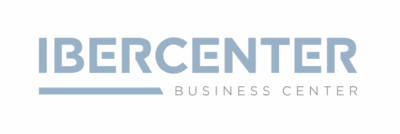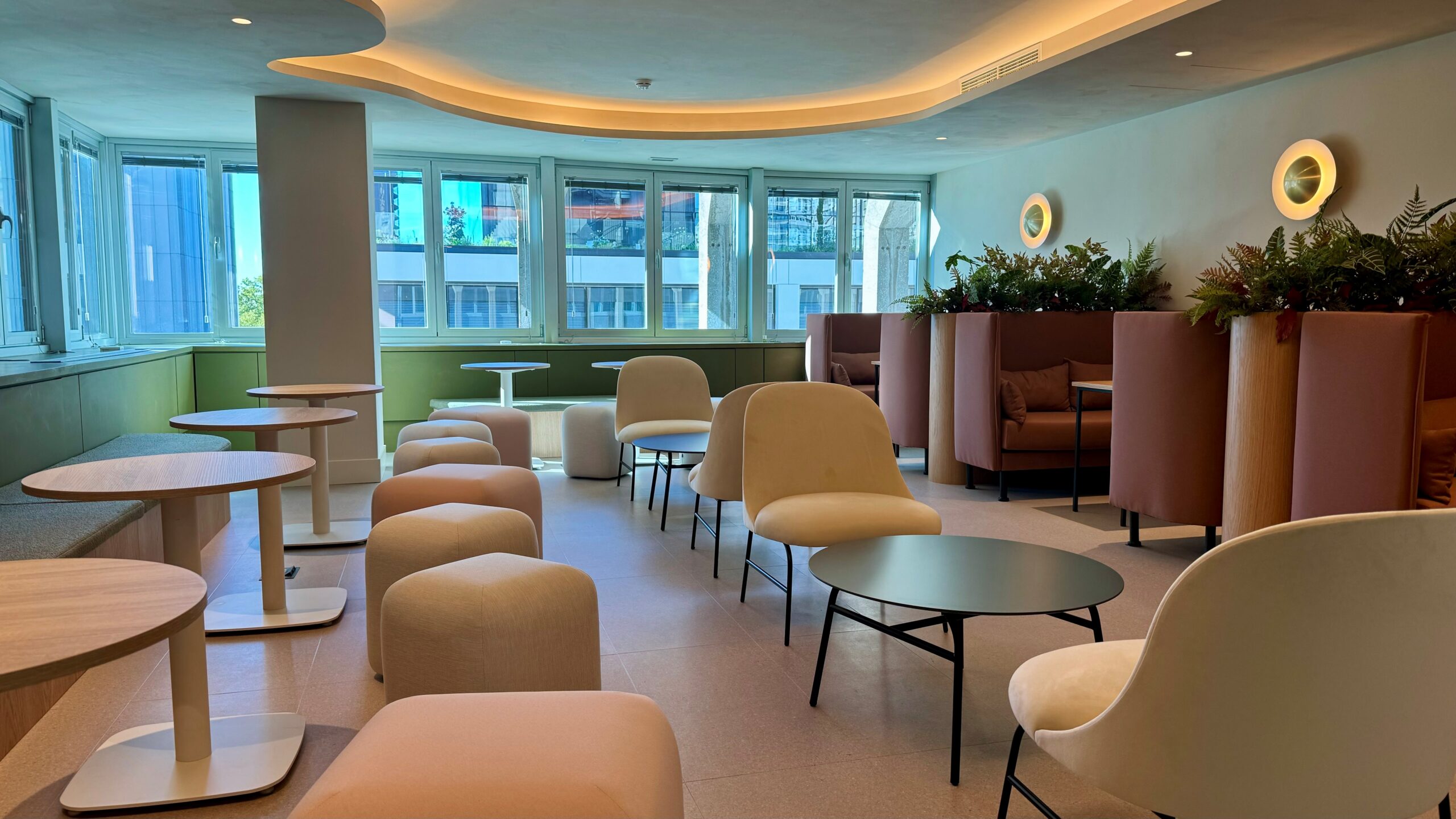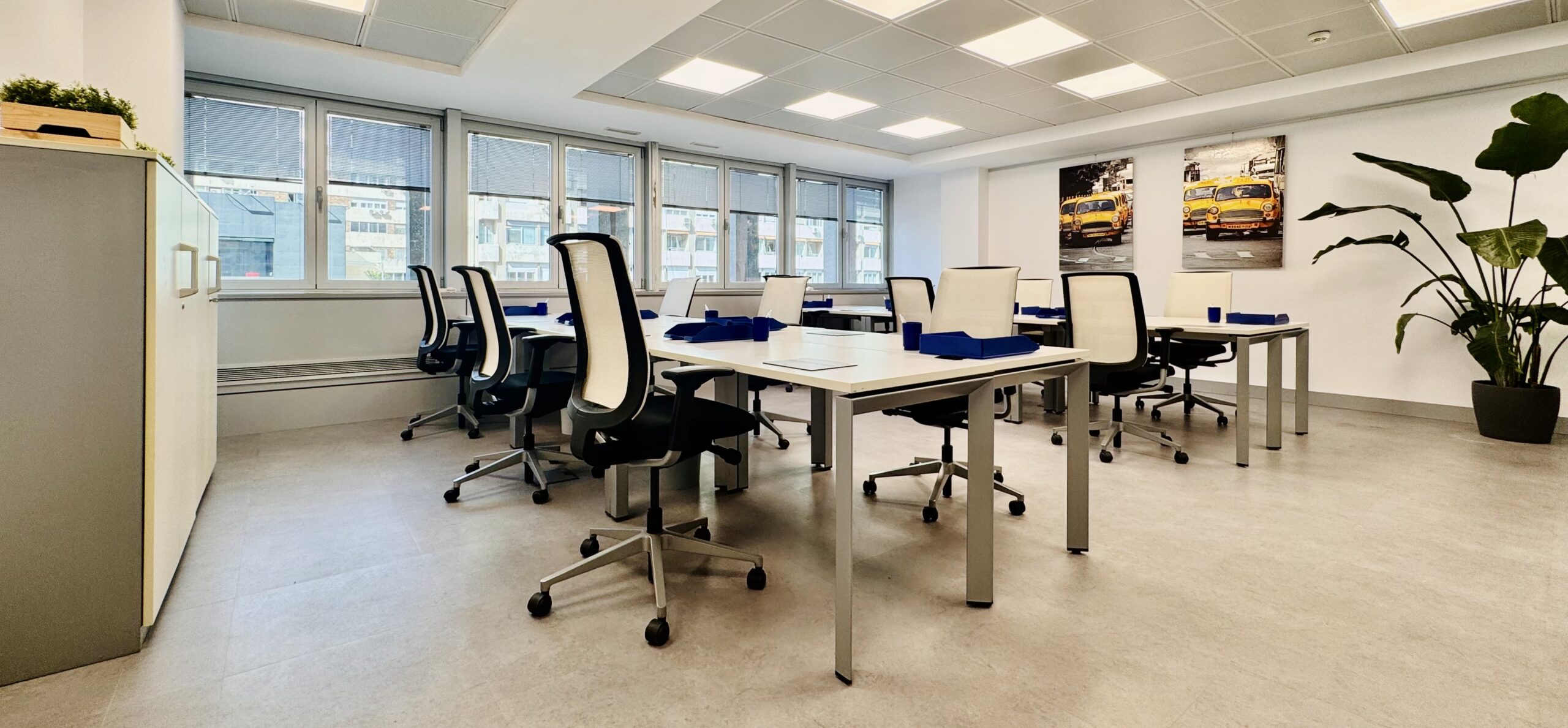In today’s business environment, where efficiency and productivity are crucial, meeting rooms play an essential role. These spaces are not only used for internal and external meetings but are also a reflection of the company’s culture and professionalism. Optimising the use of meeting rooms has become a necessity to ensure that these spaces serve their purpose effectively and contribute positively to the organisation’s performance.
The purpose of this article is to provide strategies and practical tips for optimising the use of meeting rooms. In doing so, the aim is not only to improve time and resource management, but also to foster an environment that promotes collaboration and innovation. In a city as dynamic as Madrid, where competition and opportunities go hand in hand, it is essential that companies maximise the potential of every corner of their facilities.
From our office rental space in Castellana, we hope to offer a useful guide to help companies make the most of their meeting rooms, transforming them into spaces where ideas flow and agreements materialise. By optimising the use of meeting rooms, you not only improve the logistics and functionality of meetings, but also project an image of order and professionalism that can make all the difference to clients and business partners.

Needs assessment
To optimise the use of meeting rooms, the first crucial step is to conduct a thorough assessment of the company’s needs. This involves, first of all, identifying the type of meetings that take place on a regular basis. Not all meetings are the same: some may be creative brainstorming sessions that require an informal and relaxed atmosphere, while others may be formal presentations to clients that require a more professional environment equipped with advanced technology. In addition, it is essential to consider team meetings that focus on project planning and review, which may require a more collaborative and flexible space.
Another essential aspect of this assessment is to determine the frequency and duration of these meetings. Knowing how many times a month the meeting rooms are used and for how long will allow the company to optimise the use of meeting rooms by adapting the available spaces according to actual needs.
For example, if it is observed that most meetings are short and frequent, it might be beneficial to have several small rooms equipped for quick meetings. On the other hand, if meetings are long and less frequent, larger and more comfortable rooms may be more effective.
A detailed analysis of these factors not only helps to optimise the use of meeting rooms, but also allows for more strategic resource planning. This can include everything from furniture to the installation of technological equipment that facilitates communication and productivity.
Room design and layout
The design and configuration of a meeting room is essential to ensure that this space fulfils its purpose efficiently and comfortably.
One of the first key decisions is the choice of appropriate furniture. It is essential to have ergonomic tables and chairs that provide comfort during long meetings, as well as flexible furniture that allows the space to be rearranged according to the needs of each meeting. Modular furniture or folding tables can be excellent options to adapt the room to different types of meetings, thus optimising its use.
The necessary technological equipment is another crucial aspect. To optimise the use of meeting rooms, it is essential that they are equipped with cutting-edge technology that facilitates communication and the presentation of information. High-resolution screens, projectors, videoconferencing systems and digital whiteboards are some of the elements that should not be missing. In addition, fast internet connections and sufficient ports for electronic devices will ensure that all presentations and collaborations run smoothly.
Lighting and acoustics also play a vital role in room design. Adequate lighting not only improves visibility, but also influences the mood and productivity of the participants.
The use of natural light is recommended whenever possible, complemented by adjustable artificial lighting to adjust the ambience according to need. In terms of acoustics, it is essential that the room is isolated from outside noise and has systems that improve internal sound quality, avoiding echoes and facilitating clear communication.
In summary, to optimise the use of meeting rooms, it is essential to design and configure them with adaptable furniture, advanced technological equipment and optimal lighting and acoustic conditions. All of this helps to create an environment conducive to collaboration and decision-making, ensuring that every meeting is productive and effective.
Organisation and programming
To optimise the use of meeting rooms, efficient organisation and scheduling are essential. The use of meeting management tools has become an indispensable practice in today’s business environment. These tools allow meetings to be coordinated and planned efficiently, avoiding scheduling conflicts and ensuring that all participants are informed and prepared. Applications such as Microsoft Teams, Zoom or Google Meet not only facilitate the scheduling of meetings, but also integrate reminder functions and shared agendas, thus optimising coordination between team members.
Shared calendars are another key tool for optimising the use of meeting rooms. They allow all employees to see room availability in real time, facilitating scheduling and avoiding duplication.
A well-managed shared calendar system can significantly improve efficiency, ensuring that rooms are used optimally and that there are no overlaps or unnecessary empty spaces. In addition, these calendars can be set up to send automatic reminders and notifications of changes, keeping everyone involved aware of any updates.
Room reservation policies are essential to maintain orderly and fair use of meeting space. Establishing clear rules on how and when rooms can be reserved helps to avoid misunderstandings and ensures that all employees have equal access to these resources.
It is advisable to define maximum booking times, advance booking periods and procedures for cancellations or changes. In addition, encouraging responsible use of rooms by reminding employees of the importance of freeing up space when it is not needed helps to optimise their use.
Time optimisation
To optimise the use of meeting rooms, efficient time management is crucial. Efficient agenda planning is one of the cornerstones of productive meetings. Before each meeting, it is important to clearly define the objectives and prepare a detailed agenda that includes the items to be discussed, the time allocated to each topic and the order of discussion. This planning not only helps to keep the meeting focused and structured, but also allows participants to prepare adequately and come up with more effective ideas and solutions.
A well-planned agenda helps to optimise the use of meeting rooms by reducing the time spent in them, avoiding unnecessary discussions and deviations from the main topic. In addition, sending the agenda to all participants in advance ensures that everyone is aware of the topics to be discussed and can prepare their contributions, which improves the efficiency and quality of the discussions.
Implementing techniques for shorter and more effective meetings is another key aspect of optimising the use of meeting rooms. One popular technique is stand-up meetings, which tend to be shorter and more dynamic, promoting faster decision-making.
It is also useful to set strict time limits for each agenda item and to appoint a moderator to monitor compliance with these time limits, preventing discussions from dragging on unnecessarily. In addition, encouraging the active and concise participation of all attendees ensures that all opinions are heard without going on longer than necessary.
Another effective technique is to prepare documents and presentations in advance, which can be shared with participants before the meeting. This allows more time to be spent on discussion and decision-making, rather than on the presentation of information. In addition, the use of technological tools for task management and agreement tracking makes it easier for issues discussed in meetings to be efficiently managed outside the meeting, freeing up time for future meetings.
Ultimately, good agenda planning and the application of techniques that make meetings shorter and more effective are essential to optimising the use of meeting rooms. These approaches not only improve productivity and decision-making, but also ensure that meeting spaces are used more efficiently, benefiting the entire organisation.
Evaluation and feedback
To optimise the use of meeting rooms, it is essential to implement an evaluation and feedback system to identify areas for improvement and adapt the spaces to the needs of users. Satisfaction surveys are a key tool in this process.
At the end of each meeting, participants can be asked to complete a short survey evaluating aspects such as the comfort of the furniture, the functionality of the technological equipment, the suitability of the space and the quality of the environment in terms of lighting and acoustics. These surveys provide valuable information about the user experience and help to identify specific problems that may be affecting the effectiveness of meetings.
In addition, it is important that surveys include open-ended questions that allow employees to express additional suggestions and comments. This qualitative feedback can reveal details that closed questions do not cover and offer innovative ideas for optimising the use of meeting rooms. Regularly analysing the results of these surveys and acting on them demonstrates to employees that their opinion is valued and that the company is committed to continuously improving workspaces.
Regular review of room usage is another essential component of optimising the use of meeting rooms. Conducting regular audits that analyse the frequency and duration of meetings, as well as the occupancy of different spaces, allows you to identify patterns and adjust resource allocation. For example, if a large room is frequently used for smaller meetings, it may be more efficient to reconfigure the space or reallocate rooms according to actual needs. This review can also help detect times of high demand, allowing for better planning and avoiding scheduling conflicts.
Analysing historical data on room usage provides a clear picture of how resources are being utilised and allows informed decisions to be made to optimise meeting room usage. In addition, implementing a digital booking system that automatically records room usage can make this task much easier, providing accurate, real-time data.
Continuous improvement
In order to optimise the use of meeting rooms, it is essential to adopt a continuous improvement strategy to constantly adjust and refine these spaces. Implementing changes based on feedback is an essential practice in this process.
Opinions and suggestions gathered through satisfaction surveys and feedback meetings should be carefully analysed to identify areas for improvement. Once problems or needs have been identified, it is crucial to act immediately, making the necessary adjustments to the furniture, technological equipment or layout of the space. For example, if several users comment that the lighting is insufficient, the installation of additional lights or the optimisation of natural light sources can be considered.
Adapting to new needs is equally important in continuous improvement. Business dynamics and ways of working are constantly evolving, and it is essential that meeting rooms keep up with these changes.
For example, with the increase in remote working and hybrid meetings, it may be necessary to equip rooms with advanced video conferencing technology and improve Wi-Fi connectivity. Similarly, if the company begins to hold more collaborative workshops, it may be beneficial to reconfigure some spaces to be more open and flexible, allowing for more dynamic interaction between participants.
The key to optimising the use of meeting rooms lies in the company’s ability to adapt and evolve according to the needs of its employees and the nature of its activities.
This involves not only responding to feedback, but also anticipating emerging trends and preparing spaces for future requirements. Conducting regular reviews of room usage, staying informed about new technologies and working methods, and being willing to experiment with new configurations are practices that foster an environment of continuous improvement.
Conclusion
Optimising the use of meeting rooms is essential to improve efficiency and productivity in any company. Throughout this article, we have explored several key strategies and aspects that contribute to this goal.
From needs assessment, to space design and configuration, to effective organisation and scheduling, each step is crucial to ensure that meeting rooms are used optimally. In addition, time management through careful agenda planning and techniques to make meetings shorter and more effective are key elements in maximising the use of these spaces.
We have also highlighted the importance of continuous evaluation and feedback, through satisfaction surveys and regular reviews of room usage, which allows us to identify areas for improvement and adapt the spaces to the changing needs of the business. Continuous improvement, based on implementing changes according to feedback received and the ability to adapt to new demands, ensures that meeting spaces remain relevant and effective over time.
To optimise the use of meeting rooms, it is crucial that companies take concrete and continuous action. Regularly assessing needs, implementing changes based on feedback and adapting to new realities are necessary steps to keep these spaces functional and productive.
From our coworking spaces in Castellana, and we are not only specialised in renting offices in Madrid, but also in renting rooms in Madrid, we invite you to put these tips into practice and to regularly review how your meeting rooms are being used. By doing so, you will not only improve the efficiency and productivity of your meetings, but also create a more collaborative and dynamic working environment. Optimising meeting room utilisation is not just a short-term goal, but a continuous commitment to improvement and excellence in workspace management.






